<>Blanc-Labo S.A. your laboratory equipment specialist
Type of products
Do you need to protect your samples? Your staff? Your lab environment? To comply with labor regulations?
On this page you will find all the equipment that can help you.

Air quality monitor. Halo Sense Smart
Monitor the quality of the air you breathe in your laboratory. Halo Sense monitors air quality in your laboratory in real time. Available in 3 versions, it provides a solution for the detection of a wide array of pollutants and fumes. If pollution is detected, it alerts the user with a light and sound pulse. * VOC for the detection of volatil organic compounds * Formaldehyde for the detection of formaldehyde * Acids for the detection of acid vapors
More info
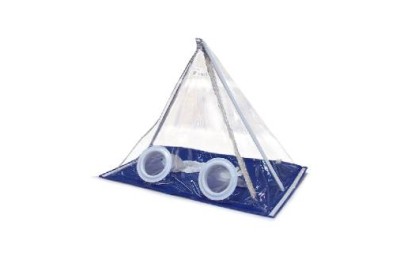
Pyramid investigation chamber
Protection of investigation.
More info

Laminar flow LN
Complete protection of your samples in a particle-free environment.
More info

Laminar flow Olis and Loïs
Optimal protection of your samples with vertical or horizontal laminar flow hoods.
More info
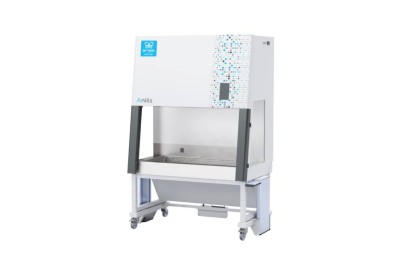
Safety cabinet class II Anilis
ERLAB safety cabinets and changing stations. The safety cabinet and changing station for demanding mice!
More info
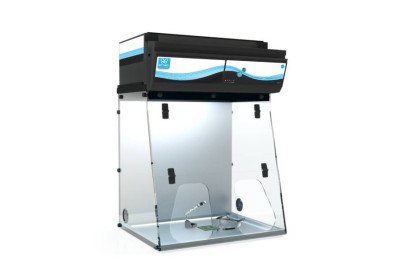
Dust-controlled enclosure
A range of dust-controlled enclosures designed to protect samples. Handling in an ultra-clean environment.
More info
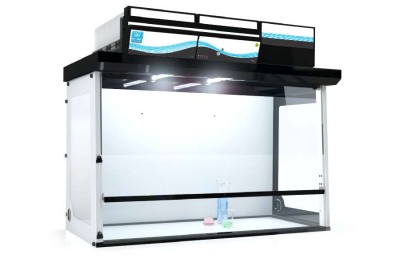
Filtration hoods
For safe handling of chemicals. 7 models in width from 780 to 1805 mm, and with 1 to 4 filtration columns
More info

Hood for PCR application
A range of PCR hoods designed for PCR (Polymerase Chain Reaction) applications.
More info

Blower ceilings for robot and cytometer
Pro.Box blowing ceilings are vertical laminar flow devices, effectively protecting robotic biomedical applications, in class 100 – ISO 5, whatever the shapes and dimensions of the clean area.
More info

Blower ceilings
A modular protection zone swept by a flow of clean and sterile laminar air which protects your products from the risks of external and cross contamination.
More info
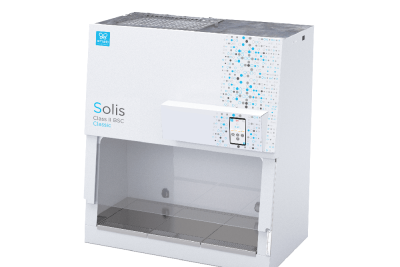
Poste de sécurité microbiologique (PSM) Solis Classic
Conforme à la norme EN 12469:2000, le poste de sécurité microbiologique Solis Classic assure une triple protection : de l’opérateur, de l’environnement, et des échantillons manipulés. Il intègre une technologie de filtration HEPA H14 haute performance (99,995 % MPPS selon EN 1822-1:2019), empêchant toute contamination croisée et garantissant un air pur dans la zone de travail. Pensé pour un usage simple, fiable et ergonomique, il allie efficacité de filtration, sécurité renforcée et facilité d’entretien.
More info
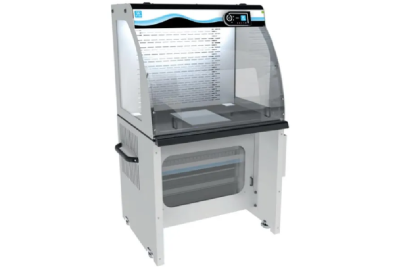
Postes de pesées sécurisés
Conçu pour répondre aux exigences les plus strictes des laboratoires, le poste de pesée sécurisée Erlab 391 Smart garantit une extrême précision tout en assurant une protection maximale des utilisateurs.
More info
Products 1 to 12 on 17 results
· The person :
o For handling liquid and/or solid products: Filtration hood (Erlab, Exacta brand)
o Odors in the laboratory, chemicals remaining on benches, unused chemicals: Filtration cabinets, safety cabinets, fire cabinets (Erlab, Cyltec, Exacta brands)
o Residual odors, equipment generating chemical vapors, insufficient air renewal system: Autonomous air purifiers without connection (Erlab brand)
o Existing cabinets without filtration with non-hermetically sealed products: Autonomous filtration box (Erlab, Cyltec, Exacta brands)
o I am not sure if pollution exists, but I want to make sure: Pollution sensor (Erlab brand)
o I have to open suspicious packages, I have to take samples in the field: Investigation chamber (Erlab brand)
· The product :
o For non-pathogenic cell cultures, in vitro cultures, non-pathogenic microbiology, homeopathic preparations in pharmacy, electronics, optics, etc.: Controlled dust hood (Erlab brand)
o For non-pathogenic cell cultures, in vitro cultures, non-pathogenic microbiology, homeopathic preparations in pharmacy, electronics, optics, etc.: Laminar flow (vertical or horizontal) (brands Erlab-Noroit, Nüve, ADS Laminaire)
o For non-pathogenic cell cultures, in vitro cultures, non-pathogenic microbiology: PCR Polymerase Chain Reaction Hood (brands Erlab, Erlab-Noroit, ADS Laminaire)
o To create a clean area/environment of reduced size, to optimize manufacturing practices and guarantee the absolute quality of finished products, to create a completely dust-free area: Blowing ceiling (Erlab-Noroit brand)
o For robotic biomedical applications, for automation platforms in sequencing, diagnostic laboratories, proteomic laboratories or cyrtometry platforms: Blowing ceiling for robot and cytometer (Erlab-Noroit brand)
· The person and the product and the environment:
o For microbiological research manipulations: PSM microbiological safety station (Erlab-Noroit, Nüve brands)
o For applications in experimental animal facilities (transgenesis, transfer of murine embryos, microsurgery), hospital sector (in vitro fertilization, preparation of corneal grafts), in industry (assembly and bonding of micro-mechanisms): Binocular microbiological safety station which allows the integration of optical devices such as a microscope, binocular, stereo-microscope (Erlab-Noroit brand)
o For secure transfers of animals from uncontrolled environments to EOPS (Specific Pathogenic Organism Free) zones, breeding confinement: Secure reception and transfer hood for zootechnics (Erlab-Noroit brand
o For a controlled environment intended for the breeding of small laboratory rodents, under specific conditions: Ventilated laboratory animal cabinet (Erlab-Noroit brand).
· Absolute confinement:
o For the production> of cytotoxics, sterile preparations, sterile active ingredients, precision weighing station, handling of CMR products, sterility testing, handling of highly pathogenic samples (Ebola type), reception of axenic animals, transfers of embryos, space industry, manipulation of nanoparticles: Isolator for pharmaceutical application and medical research (Erlab-Noroit brand)
o For housing animals in the laboratory (mice, rats, poultry, etc.): Isolator for zootechnics (Erlab-Noroit brand)
· What should I handle in my filtration hood?
o Liquid products?
o Solid products?
o Both?
o Do I need to do weigh-ins?
o CMRs, pathogenic products?
Captair filtration hoods can be configured with multiple levels of filtration according to your needs. In order to determine the correct configuration of the filtration column and the correct type of filter, it is necessary to carry out a risk analysis using the ESP Erlab Safety Program (Valiquest questionnaire). Ask us for your questionnaire for a free, no-obligation risk analysis.
The benefits for you:
· The manufacturer undertakes to provide a product that meets the customer’s needs.
· The Valiquest analysis determines the most appropriate hood for your handling.
· The manufacturer undertakes through the result that all products handled are filtered and retained.
· A predicted and calculated lifespan for molecular filters.
· A Valipass certificate is subsequently affixed to the filtration hood.
· Applications of a filtration hood
o Precision weighing < > 10-6 g
o Containment of laboratory equipment: HPLC, granulo, laser, rotavapor, PH meters, titrators, pipetting robots, muffle furnaces, ultrasonic baths, stirrers, filtration assembly, grinders, sieve machines, and in general all evaporation generating devices.
o All cold or low temperature handling of chemical products, including acids, liquids and/or powders.
· Limiting applications
o Evaporation of large quantities of liquid products or water.
o Hot acid attacks.
The limits of applicability of a filtration hood lie more in the quantities evaporated than in the type of products handled. These limits are those of operating cost rather than safety. If, however, you have large quantities to handle or a negative risk analysis, opt for an extraction fume hood.
· Where should I install my hood?
o In a clean/white room
§ It is important to tell us during the risk analysis if your hood must be installed in a clean/clean room.
o What is the ceiling height?
§ Some hoods require a minimum space between the top and the ceiling. For this reason it is important to inform us of the ceiling height.
It is also important to choose the location for the hood, taking into account air vents, drafts, etc. Do not hesitate to ask us for advice.
· What type of environment?
o Type of lab: P2/P3/P4
· Does the work methodology involve?
o Use of large or bulky equipment indoors?
o Use of powder or liquid, both?
o A specific working position (sitting or standing)?
o Occasional mobility of the PSM?
· What types of products should I handle? Pathogens? Non-pathogenic? CMR?
o Pathogens: PSM type II
o Non-pathogenic: laminar flow hood may be sufficient
o CMR (powder): Type II PSM with additional Hepa filtration
o CMR (liquids): Type II PSM with molecular filtration
· Does the application require the use of chemical compounds?
o If yes, it is necessary to know the type of products and quantities.
§ For large quantities, a PSM is not suitable.
· What type of base do I want?
o Fixed
o On casters
o Height adjustable
· What arrivals/utilities do I need?
· Do I have to meet a specific standard (GMP/GMP)?
o If yes, flow speed at 0.45 m/s
· Where should I install the PSM: ground floor, upstairs (constraints)?
HOW TO CHOOSE A SECURITY CABINET – CHOICE GUIDE
· What are the product families to be stored and what is the volume per type?
o You can consult the chemical incompatibility table via the following link ->
o Warning: If a product contains several pictograms, the order of priority is as follows:
§ Flammable – Oxidizing
§ Corrosive (acid or base)
§ Toxic – CMR – Harmful/irritant – Pollutant
Example: nitric acid is oxidizing, corrosive and toxic. It should be stored in a fireproof cabinet, if possible with plastic shelves and ventilation.
· Inflammable or oxidizing products must be protected from a possible fire; they must be stored in fire-resistant cabinets.
In addition, the EN 14470-1 standard requires ventilation of the cabinet, ensuring at least an air renewal rate of 10 times the volume of the cabinet per hour.
Flammable products and oxidants cannot be stored in the same cabinet.
· Corrosive products (acids and/or bases) should be stored in a ventilated anti-corrosion cabinet. Ventilation will prevent any stagnant steam in the cabinet.
Acids and bases should be stored in separate compartments.
· Compressed gas cylinders must be stored in fire-resistant cabinets according to EN 14470-2, i.e. in non-fire-resistant cabinets.
· Batteries and/or lithium cells should be stored in fire-proof cabinets, because they present a chemical risk and a fire risk.
· Radioactive products should be stored in cabinets with both fire resistance and lead radiation protection.
· Toxic products (toxic, harmful, irritants, CMR and pollutants) must be stored in a ventilated cabinet, with retention and locking.
o What is your available space?
Safety cabinets exist in different volumes. It is important to measure the space available in your room in advance, but also to check all access to the destination room. Some cabinets already weigh very heavy even empty, so it is important to check the weight supported by the floor.
o Is there an extraction network on your premises?
Most cabinets are fitted with a connection collar, allowing them to be connected either to an extraction network or to a ventilation/filtration box.
Indoor air pollution is an often overlooked danger. Contrary to popular belief, indoor air is more polluted than outdoor air and kills 20,000 people in France each year (according to an ANSES study), but can also create chronic or serious illnesses.
Even in an empty room, we are not alone: viruses, bacteria, particulate matter, VOCs are there, but it is impossible to diagnose air pollution in an enclosed space with the naked eye .
Purifying the indoor air we breathe and therefore as important as purifying the water we drink!
For this, there are professional air purifiers such as the HALO Smart from Erlab which offers the most effective solution on the market, intended for air purification in closed spaces open to the public.
It guarantees 99.5995% healthy air in work spaces, emergency departments, zoo operating theaters, endoscopy washing rooms, meeting rooms, restaurants, nurseries, etc.
The HALO exists in two versions: against VOCs (Volatile Organic Compounds) and against viruses, bacteria, fine particles and allergens.
How to choose the right Halo and the right number: Questions to ask yourself and information to give us
o What pollution do you want to treat? Odors, VOC vapors, formaldehyde vapors, acid vapors, inert particles (dust), powders, biological agents (viruses, bacteria, molds), allergens, pollens
o Have you clearly identified the pollution?
§ Is it permanent or periodic?
§ Is it localized or broadcast?
o In which room is the pollution located?
§ What is the shape of the premises?
§ What are its dimensions (length, width, ceiling height)?
§ How many doors, windows are there in the room?
§ What is the type of ceiling (false ceiling, other)?
o Is there general ventilation?
§ If yes, what is the air change rate per hour?
§ How many extraction/blowing vents are there in the room?
§ Where are they located?
o For easier installation, it is necessary to provide an electrical inlet and an accessible RJ45 network socket for connecting the device.
Welcome to our page bringing together a complete range of equipment intended for laboratory safety and enclosed places open to the public. On this page you will find equipment for the protection of people, the protection of your samples, but also for the storage of your chemicals: Filtration hoods, Microbiological safety stations, Secure reception and transfer hoods for zootechnics, Isolators pharmaceuticals and medical research, Isolators for zootechnics, Autonomous filtration boxes, Air purifiers, Pollution sensors, Investigation enclosure, Laminar flow, Dust-controlled enclosures, Blowing ceilings, Blowing ceilings for robot and cytometer, PCR hoods, Cabinets pet storage, Filtration cabinets, Fire-proof cabinets, Cabinets for radioactive products, Multi-product safety cabinets, Safety cabinets for lithium batteries, Phytosanitary cabinets, Cabinets for gas bottles, Cabinets for corrosives, Cabinets for drums, Cabinets for toxics , Portable safety deposit boxes, Medicine cabinet.
Discover all the details by opening the accordions at the bottom of the page, under the product photos. On this page we have grouped all the equipment related to the protection of laboratory personnel, but also to the protection of applications and secure storage.
Contact us if you would like help choosing the right product
